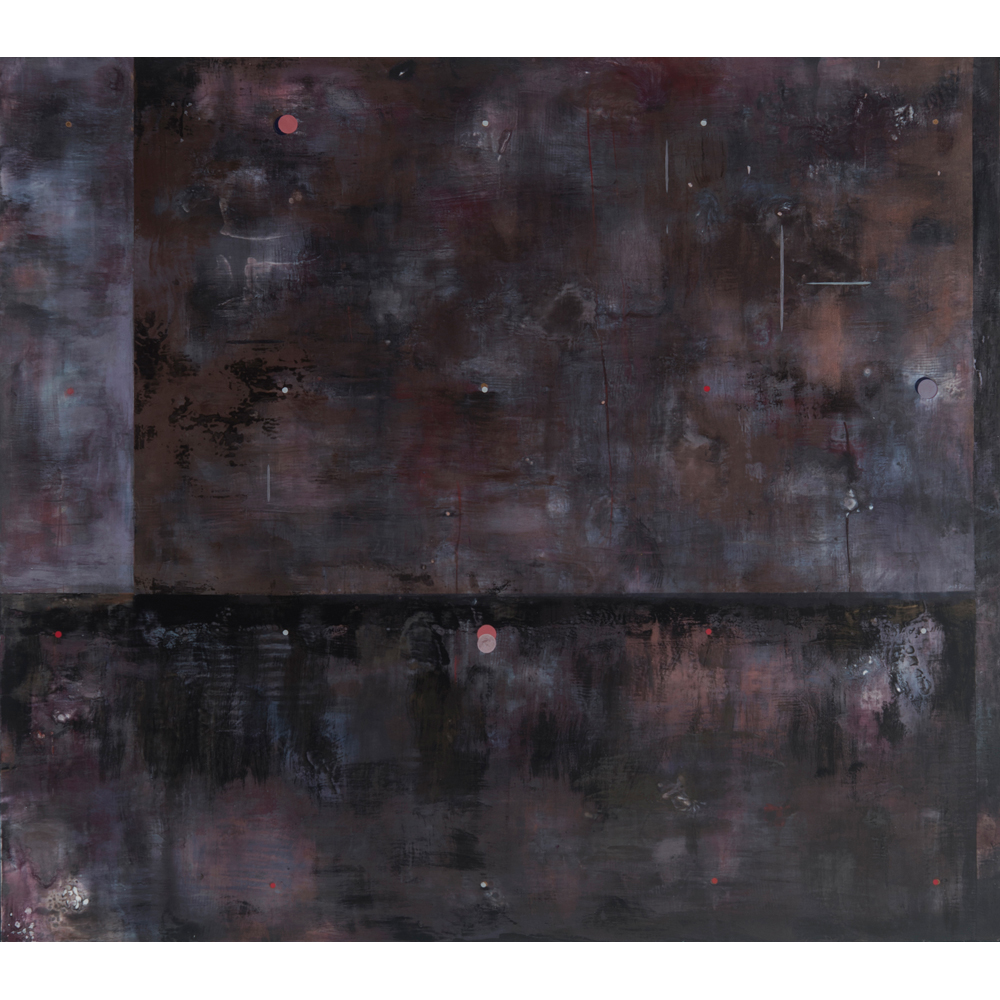Artwork Description
False Anxiety
Dimensions: 46 x 52″
Year: 2016
Media: encaustic on birch panel
Raphaëlle Goethals’ encaustic on birch panel work, False Anxiety, references Goethals’ fascination with the human mind and internal psychological processes. Here, one might first experience a sense of anxiety when confronting his inability to distinguish recognizable forms within the work. However, this is the exact process that allows the viewer to understand and thus subvert the subject matter. This is most pure experience of abstraction in art. In this way, False Anxiety holds a degree of agency over the viewer by rejecting classification through its atmospheric and mysterious surface. Raphaëlle, however, instructs through her inclusion of a grid-like pattern of dots and partitioned portions, that there is an innate order within the ambiguity of the natural world.
Raphaëlle Goethals is a self-described bicultural artist, who grew up in Belgium and left for the United States to pursue her artistic career in Los Angeles—culminating in her move to New Mexico where she has lived and produced work for the past twenty years. Due to her upbringing in an environment riddled with the artistic successes of Flemish Renaissance Artists and more contemporary individuals such as René Magritte, Goethals work often draws on this rich history, emphasizing a sense of process and creation in conjunction with art historical elements. Her work is best described as abstract, where Goethals gradually builds up detailed surfaces through layering wax and resin, incorporating elements from the present through each additional layer and the past by manipulating new layers to reveal the textures beneath. Goethals’ work redefines traditional ideas surrounding language and time and serves as a personal adaptation of a landscape, where her pieces visually explore the human mind rather than a geographical region. Goethals challenges viewers to limit the scope of information they take in and are frequently bombarded with by observing pieces that are reductive in nature and free viewers from external distractions.
by Keira Seidenberg

